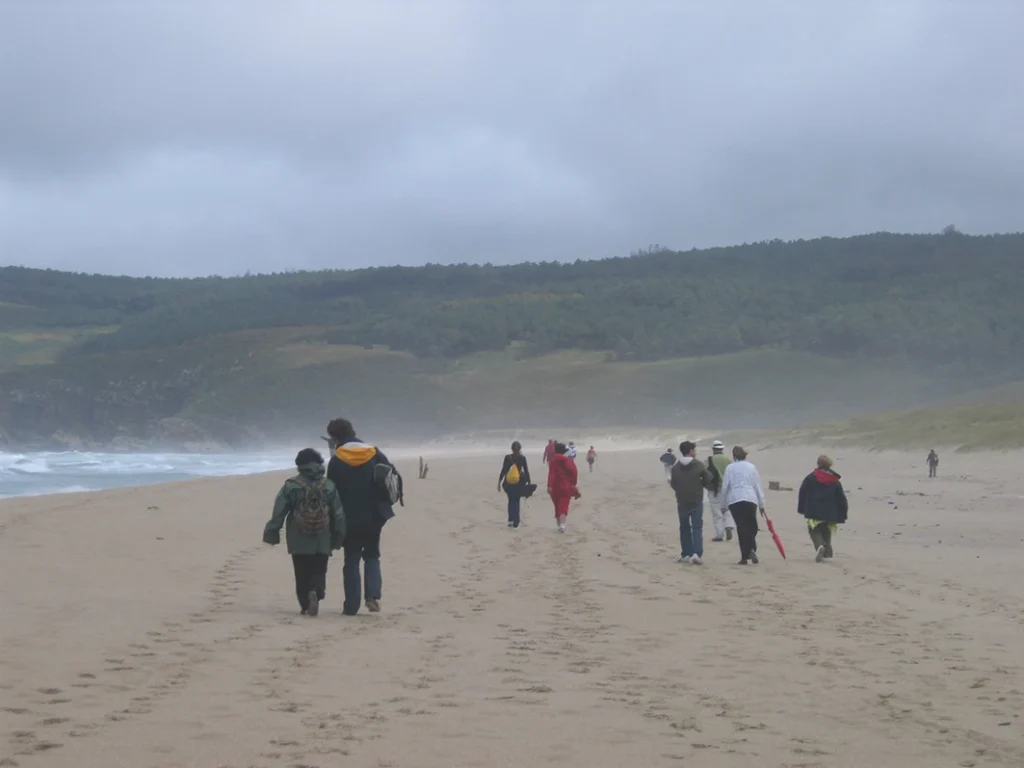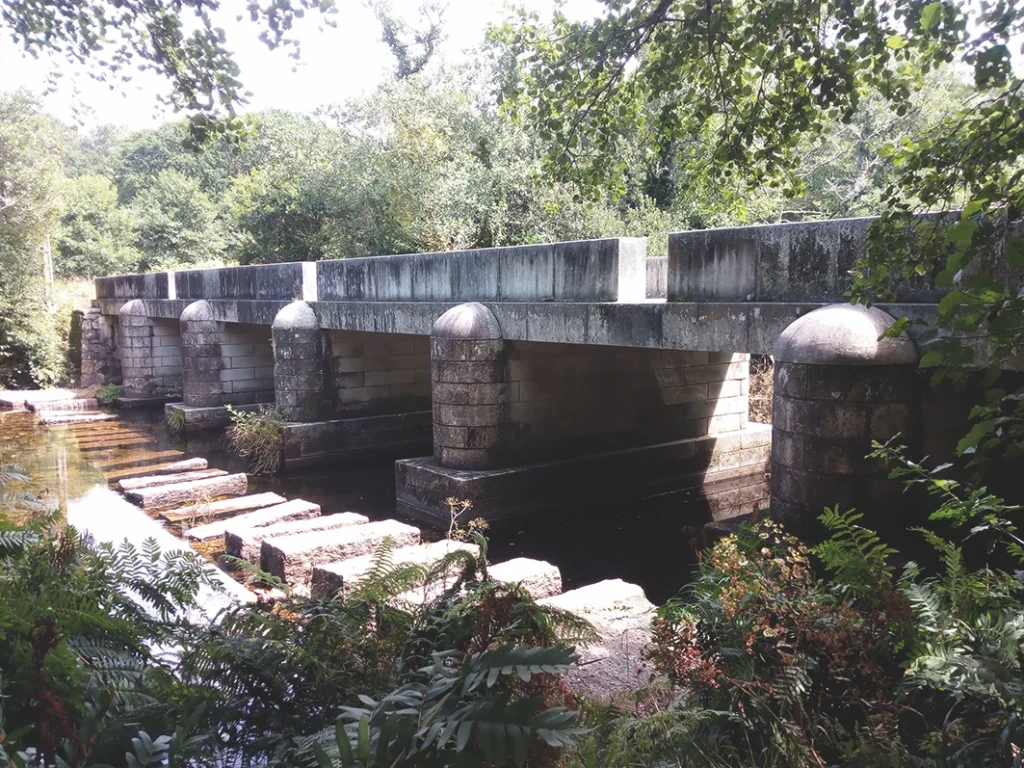After visiting the town and peninsula of Fisterra, which takes about one day, now’s the time to head off to Muxía.
Leave Fisterra on the straight road called A Anchoa, and take the road to the left towards Ermedesuxo, Denle, Castromiñán and the beach of O Rostro. This road crosses the valley of Duio, where the legendary city of the same name is supposed to be. The place name lasts in the parishes of San Martiño and San Vicenzo. After Denle, the road passes close to the hamlet of Castromiñán, whose name comes from the hillfort on the coast, where the defensive walls can be clearly seen. A little more to the north is the headland of O Castelo, where a cargo ship, the Casón, sailing under a Panamanian flag, ran aground on 5 December 1987. 23 of the 31 crew
were killed in the accident. There was tremendous alarm and panic amongst the local population because of the highly toxic cargo that the ship carried. The road heads closer to the sea and runs parallel to the beach of O Rostro, a long stretch of wild sandy beaches of about two kilometres, with open sea and rough waves, which produces a constant and all-encompassing roar that’s well worth listening to. There is a local saying that goes: “Sea of O Rostro, if you wed, you’d soften”.
Further on the way, you’ll pass through the hamlets of Padrís and A Canosa and then reach Lires, which is a parish in the municipality of Cee. The village extends along the side of the road that goes to the small ría and the beach. Nearby is the mouth of the river Castro, the source of which is in the highlands of the parish of Castrelo in Vimianzo. It acts as a border between the municipalities of Vimianzo, Cee and Muxía. The name of the river comes from O Castro de Coucieiro, which it passes through to give shape to the beautiful natural area of As Caldeiras do Castro. The river mouth forms a small estuary or ría, a natural site of great interest thanks to the many birds that inhabit this tranquil area. Part of this space is occupied by a large fish farm for trout that was established in 1969, as part of the Tres Mares group. It produces about 3,500 tons of fish a year.
The estuary extends via the stream of Lires and the tide waters come up to the hamlet itself. After passing through the hamlet and crossing the stream, you come to the small ría, which can come as something of a shock when you discover the peaceful atmosphere there, occasionally interrupted by the sound of birds singing or fish jumping in the calm waters.

At the end of the road you’ll marvel at the fantastic view over the long beach of Nemiña. To get there, you need to take the road to cape Touriñán and turn left. This long sandy beach is ideal for a day by the sea protected from the north east wind. It has become a firm favourite for surfers in recent years.
The coastal Way of St James from Fisterra to Muxía passes through Lires and is mentioned by ancient travellers and pilgrims, who crossed the river Castro via a crossing that no longer exists because of the waters from the weir that supplies the fish farm. A foot bridge was built here in 2011 to allow travellers to cross the river at this point. The Vaosilveiro manor house, a property owned by the Oreiro family, is on the other side. The place name inspired the local writer Gonzalo López Abente to write one of his novels.

Lires was a pioneer in efforts to promote rural tourism. It was the first village to open this kind of establishment in Costa da Morte. The residents previously lived from farming, but now they work mainly in tourism.
Leave Lires along the road to Pereiriña and about three kilometres further on turn left towards cape Touriñán. Cross the river Castro at A Ponte Nova and pass through Frixe. The village parish church of Santa Locaia has some Romanesque remains. 2.5 km further on, you’ll come to a turn to the left that takes you to the beach of Nemiña, which is worth a visit if you fancy going there. Or you can carry on down the road to cape Touriñan.